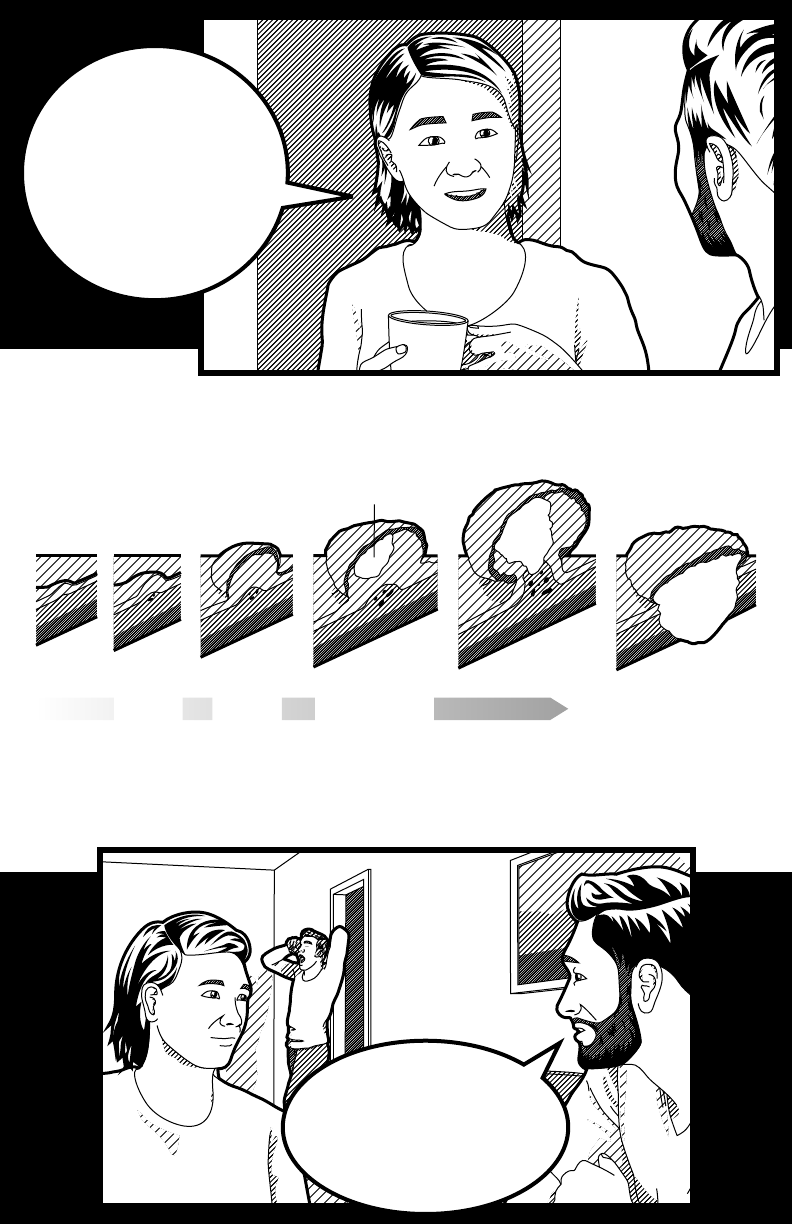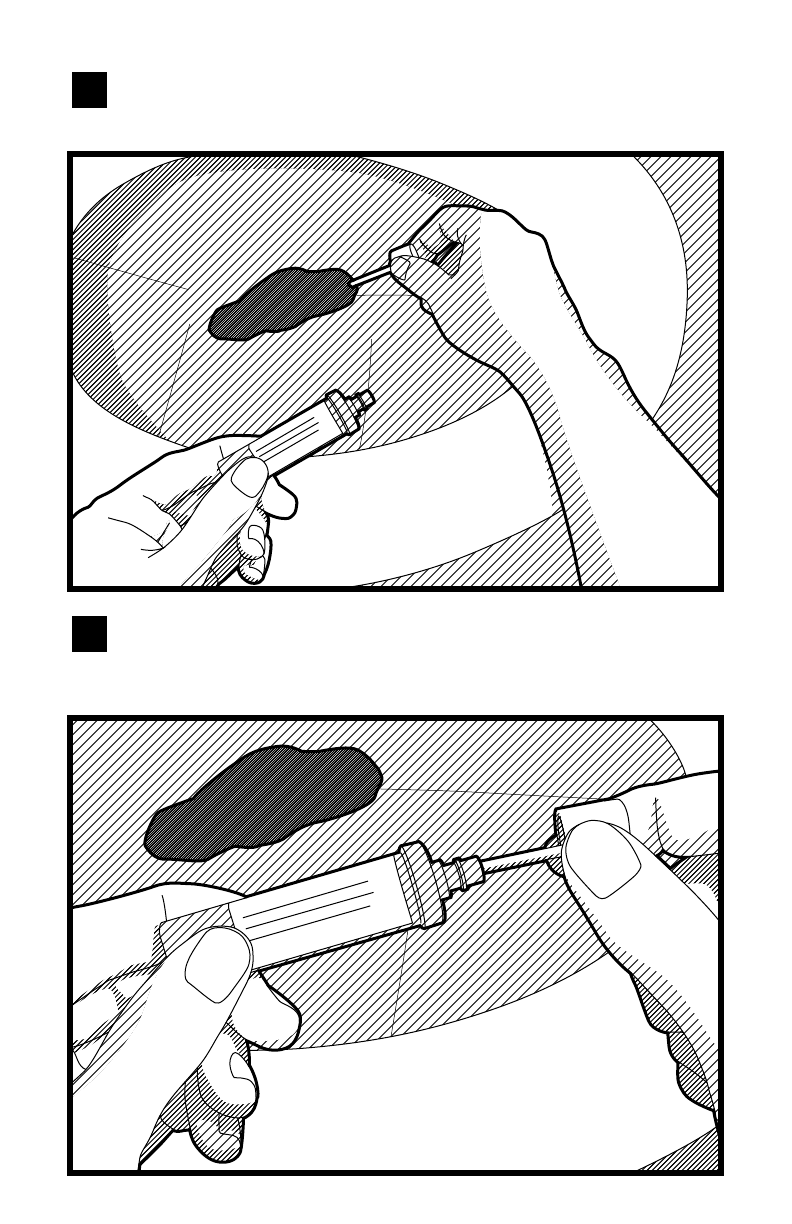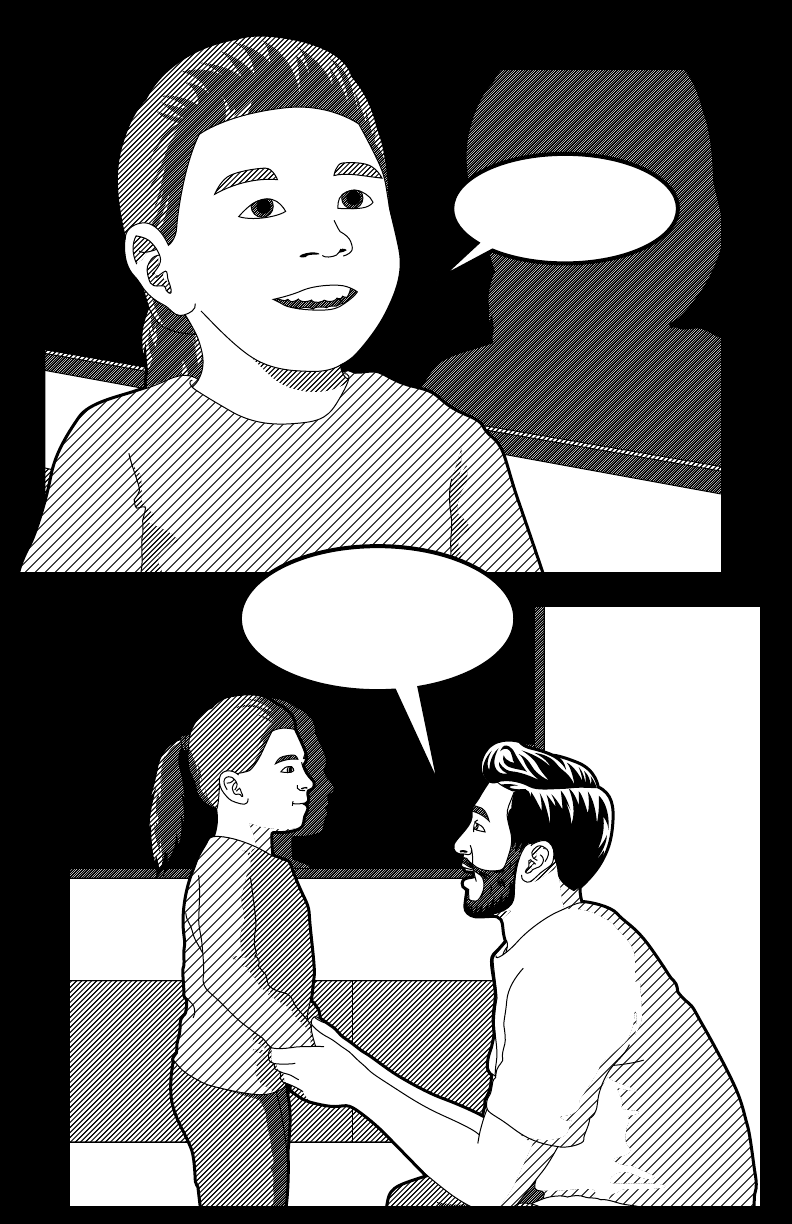
Home
Test Kit
How To Do an
At-Home Colon
Cancer Test
How To Do anHow To Do an
At-Home ColonAt-Home Colon
Cancer TestCancer Test
Introduction
Colorectal cancer, also called colon cancer, is one of the
leading causes of cancer-related death in New York City (NYC).
Regular screening can help prevent this kind of cancer or nd it
earlier, when it is easier to treat.
Colon cancer cases have been increasing among people
younger than age 50. People without risk factors should start
screening at age 45. If you have risk factors, such as a close
family member with colon cancer, you may need to start
screening earlier or get screened more often.
Discuss your personal risk with your health care provider to
determine how early and how often you should be screened.
It is better to know about your risks sooner rather than later.
Having risk factors does not necessarily mean you will develop
colon cancer, and having no risk factors does not mean you will
not get the disease.
There are dierent colon cancer screening tests, including
stool-based tests and colonoscopy. Stool-based tests may be
more convenient because they do not require preparation and
can be done at home. They can detect blood or changes in
genes (DNA), which can be signs of colon cancer, from a stool
(feces) sample. Stool-based test options include:
• A fecal immunochemical test (FIT), which detects blood. A FIT
is recommended every year.
• A high-sensitivity guaiac-based fecal occult blood test
(HSgFOBT), which detects blood. An HSgFOBT is
recommended every year.
• A multi-target stool DNA test (FIT-DNA), which detects blood
and changes in genes that could be signs of cancer. A FIT-
DNA is recommended once every three years.
A colonoscopy is done at a health care provider’s oce and
requires preparation and setting time aside for the procedure.
It is a visual exam with a special camera that allows a health
care provider to directly observe your colon and remove small
polyps found along the way. If a growth is too large to remove
during the colonoscopy, they will take a sample to see if there is
cancer or if it is benign (not cancer). Removing polyps can help
prevent cancer. A colonoscopy is done once every 10 years or
sometimes more frequently, depending on your personal risk
and what the exam shows. A positive stool-based test must be
followed up with a colonoscopy.
Talk to your health care provider to nd out which test to do. If
you are doing an at-home stool-based test, read this story to
learn more.

Test Kit
Hey Mark.
What do you
have there?
Hey Sandra.
This is the stool-based
test that my health care
provider suggested
to me to screen for
colon cancer.

I take a small sample
of my poop, then I
send it to a lab where
they will analyze my
sample for hidden
blood.
Hidden bleeding can
be a warning sign
for colon cancer or
some other illness.
I am happy you
are taking steps
to protect yourself
from colon cancer,
Mark. How does this
test work?

How are they
di fferent ?
Detecting cancer as
early as possible
sounds smart. That
would mean it is easier
to treat, right?
How did you
decide which
test to do?
I spoke to my health care
provider to compare screening
options. We spoke about a
colonoscopy and a
stool-based test. Both find
colon cancers early.

I can do the
stool-based test
at home. it does
not require a
special diet.
And you don’t
need to be put
under anesthesia
for this test,
right?
Right.
If nothing shows up
in the stool-based
test, then my results
will be considered
normal .
I will keep
checking once each
year. If it ever
comes back as not
normal, then I will
get a colonoscopy.

I had a
colonoscopy,
remember ?
A colonoscopy
can also take out
polyps that might
become cancer.
Abnormal Cell Growth
Cancer
Precancerous
Polyp
Polyp
(Small)
Polyp
(Large)
Stages of Polyps
That is true.
But I am not
ready to have a
colonoscopy yet.

Hey Andrew!
This is a colon
cancer test I got
from my health
care provider.
This is one of
a few types of
stool-based tests
that can be mailed
from your home.
Hey dad. What
do you have
there?

Interesting.
I just checked the
expiration date of the
test, and it’s still
good. I want to do
the test soon, before
I forget.

How long
does i t take?
Got it. Let me know
when you are finished.
We can take a walk to
mail it together today.
Talk to your health care provider to decide which kind of
stool-based test is best for you, as this story only
demonstrates a few options among many. There are small
dierences between tests and dierent ways to return them.
Follow your kit’s instructions.
Ok!
Only a few
minutes, then I
will put it in
the mail.

Mailing Envelope
Sample Tube
Resealable
Bag
Biodegradable Toilet Liner
Patient Details Form
Instructions
TOILET LINER
Biodegradable
Flush down toilet
once sample taken
This side up
Home
Test Kit
Test Kit
Home
Instructions
Participant Details
BUSINESS REPLY MAIL
NO POSTAGE
NECESSARY
IF MAILED
IN THE
UNITED STATES
Open up the kit. Keep it clean and dry.
“Do not perform
test if you have
active bleeding.” I
do not have that.
HOW TO USE A FIT TEST
1

Flush the toilet twice. If you have cleaners in your toilet
bowl, remove them and ush twice.
Unfold the large ushable tissue paper. Place it on the
surface of the toilet water.
2
3

Name
DOB
Date
Have a bowel movement as normal. Do not ush the
toilet. Discard your used toilet tissue, but not in the
toilet bowl.
Brush the tip of the
sample probe on
the stool.
Time to take
the sample.
4
5

Name
DOB
Date
Name
DOB
Date
Do not take any large pieces of stool. Shake the probe
once to remove any clumps or water droplets.
6
7
Put the probe back in the tube and close it tightly.
Make sure no stool goes outside of the tube. If it
does, you can wipe it o.

Name
DOB
Date
Name
DOB
Date
Your kit may have a card and brush. Brush a small
amount of stool sample in the box on the card. This
takes about ve seconds. Make sure no stool goes
outside of the box. If it does, wipe it o.
Your kit may have a second probe or brush to take a
second sample. If it does, take a second sample the
same way as before.
Flush the toilet. Wash your hands with soap and water
for 20 seconds.
1... 2... 3... 4... 5...
8
9

12345-TEST-00
Put the sample in the envelope mailer and seal it.
Fill out any labels or forms, including your name and
the date the sample was taken.
10
11

1
2345-TEST-00
PATIENT GUIDE HOW TO RETURN YOUR KIT
Step 6: Label Your Samples
PLEASE RETURN YOUR KIT TO EXACT SCIENCES
LABORATORIES VIA UPS ACCORDING TO THE
FOLLOWING INSTRUCTIONS.
INDICATION FOR USE
EXAMPLE
John
Doe
05/16/58
06/15/21
01:25 PM
Container
Bracket
Shipment Box With Bag
Sample
Container
Liquid
Preservative
Instructional Materials
Sample Labels
Sample Tube
Another test type is a multi-target stool DNA test, or FIT-DNA
(Cologuard). It can detect hidden blood and changes in genes
that could be signs of colon cancer.
HOW TO USE A FIT-DNA
(COLOGUARD) TEST

Note: Keep the bag and box. You will need them to store
and ship your stool sample later.
Place the bracket under
the toilet seat. Put the
open sample container
in the bracket.
2
Have a bowel movement as normal.
1

Scrape the tip of the sample probe on the stool. Make
sure to cover the grooves on the end of the probe. Do
not take any large clumps of stool.
Put the probe back in the tube. Close it tightly.
3
4

Pour the preservative into the container with
the stool.
Close it tightly. Make sure no stool goes outside of the
container. If it does, wipe it o.
Ship your sample
with UPS using the
address indicated
in the kit. You do
not need to pay for
postage.
5
6
7

That was
quick!
Yes. The
directions
were clear.
When do
you have to
mail it?

Let’s go now. We
can get in some
exercise.
Within 24
hours.
That would
be good for
all of us.
Sending it out for
analysis is really
important, so I want
to mail it as soon
as possible.
OK. A walk
always sounds
good.
Did you know
physical activity
can help prevent
colon cancer
too ?
side view

side view
Sure, Lily. let’s
go together.
Can I come?

You go ahead.
I will see you
later. Good luck
with the test!
Tha nks ,
honey.
I will know
in one or two
weeks. Do you
want to come for
a walk with us?
When will you find
out the results?

How will you
know if you have
colon cancer or
not ?
I still have to take
another test every year.
If I used FIT-DNA, I
would repeat the test
every three years.
If the test is negative,
that is a sign that I do
not have colon cancer. The
test can miss some cases,
but that is rare.

What if the test
finds something?
My health care
provider will contact
me. It can mean
cancer in my colon
or rectum, or it can
mean something else is
wro ng .
I would then need
a colonoscopy
next to find out.

Yes, and
she was
fine.
I remember
when Mom had her
colonoscopy. They
used a tiny camera
to look inside
her colon.

I hope it comes
back negative and
you do not have
signs of colon
cancer !
Me too! The
important thing is
I am taking care
of my health.

Facts About Colon Cancer Risk
Risk factors for colon cancer include:
• Being older — about 90% of cases occur in people age 50
and older*
• Having a personal or family history of colon cancer or
adenomatous polyps
• Having an inherited syndrome such as Lynch syndrome or
familial adenomatous polyps (FAP)
These lifestyle changes may lower your risk of colon cancer:
• Lowering your weight if you have overweight or obesity
• Increasing your physical activity by sitting less and
moving more
• Eating fewer processed meats and more fruits and vegetables
• Drinking fewer alcoholic drinks, and not smoking
• Reducing or stopping tobacco use. For support to quit
smoking or vaping, call 866-NY-QUITS (866-697-8487).
Talk to your health care provider today about your risks
and screening for colon cancer.
To learn more, visit nyc.gov/health/coloncancer. For related
stories about screening, click on Sandra’s Story and Mark’s
Decision.
*People without risk factors should start screening at age 45, as colon cancer cases
have been increasing among people younger than age 50. People with risk factors
may need to start screening even earlier. Most insurance plans cover colon cancer
screenings. However, coverage can vary. Check with your health care provider and
insurer about coverage before your screening test. If you do not have insurance, you
may be eligible for low- or no-cost coverage. Call 311 for free enrollment assistance.

3.24
